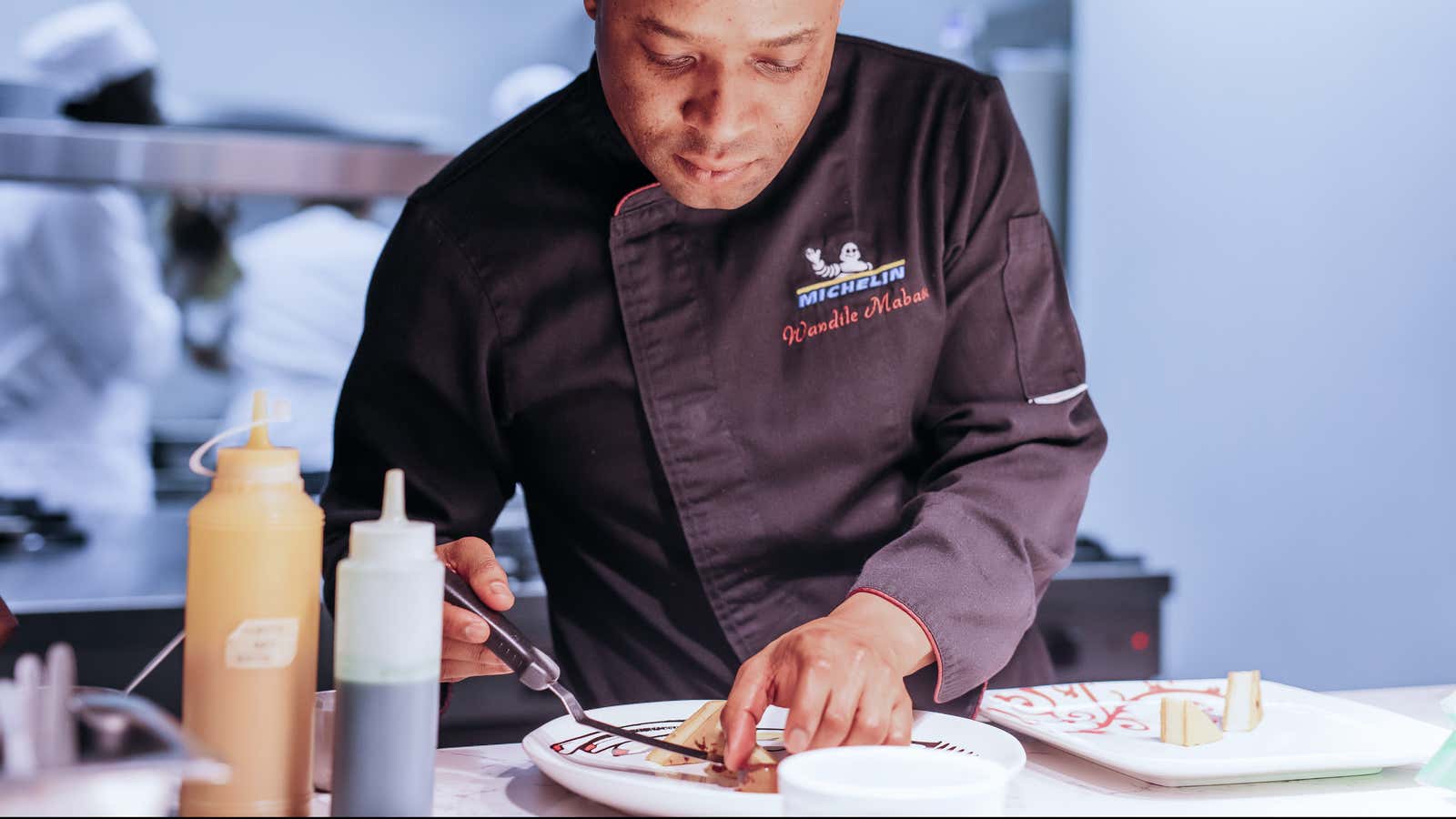What is South African cuisine? Is it mielie pap? Boerewors? Milk tart?
At his new fine dining restaurant, Les Créatifs, in Johannesburg’s Bryanston neighborhood, Chef Wandile Mabaso is gradually incorporating traditional ingredients in his menu. He develops experimental flavors using South African staples. Chakalaka, a spicy vegetable relish, is fermented in beetroot juice. Creamy risotto is made using a traditional starch, samp (dried corn kernels broken into chunks), instead of arborio rice.
Mabaso believes most chefs apply the standard approach to South African food. They infuse a dish with rooibos tea or serve an ostrich steak. Yes, these ingredients were grown on South African soil, but it’s not part of our daily diet. He explains that there’s no history of South Africans eating kudu or ostrich as part of our food culture.
“The top chefs we have in the country, the majority of them are not South African. The guys that are South African, they are very much out of touch with what the rest of South Africa grew up eating, or what they perceive as South African food,” says Mabaso.
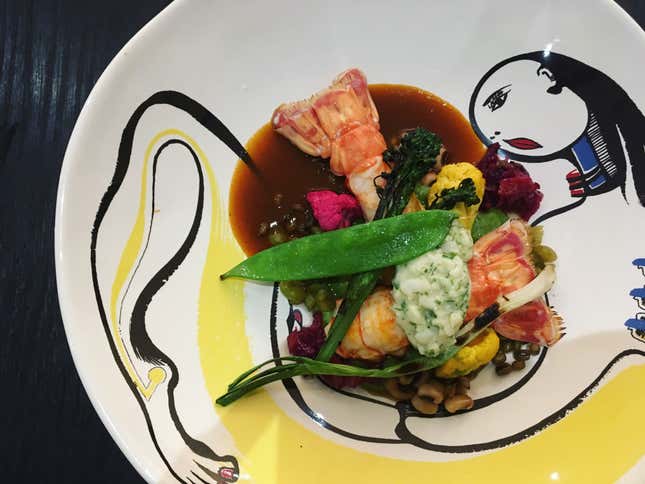
Until recently, European cuisine was considered the epitome of epicurean aspiration while indigenous foods were disparaged. A new generation of chefs is trying to bridge the gap between historically suppressed food culture and the modern interpretation of fine dining to determine and refine an authentic understanding of South African cuisine.
It’s not just that black chefs have historically been excluded from the highest echelons of the profession; even today, previously disadvantaged chefs frequently lack the resources, not to mention cultural capital, to put indigenous South African cuisine and recipes front and centre of the fine dining experience.
For Mabaso, South African food is not determined by a specific flavor or ingredient: “It doesn’t have to be something tangible, it can just be a concept. For example, I was driving in Soweto and I happened to see a group of guys playing dice in the corner which we grew up seeing all the time. I came back and literally created a dessert that’s a dice.”
Mabaso creates a visual story on the plate. His desserts are rooted in a sense of memory and past experience. Humble ingredients, like amasi (fermented milk) and amabele (sorghum), are transformed into complex and refined dessert elements while preserving the nostalgia of childhood foods.
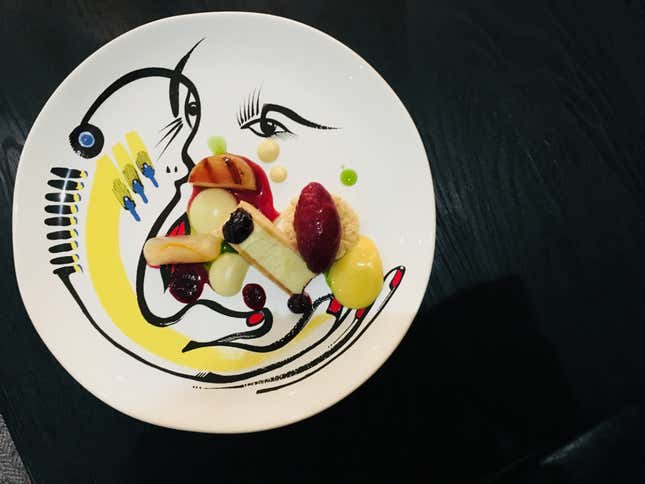
While some chefs might simply fold sorghum into an ice cream mixture, Mabaso slowly develops flavor over a two-month fermentation process. Sorghum is fermented, cooked, then fermented again before it’s incorporated into a custard base. The resulting amabele ice cream has an intense depth of flavour developed over time.
“As a chef, my job is to be an interpreter between nature and human beings. So I need to teach human beings how to eat, what to eat, how to transform certain foods,” says Mabaso.
The notion of ‘refining’ or ‘transforming’ local foods doesn’t mean masking or manipulating the taste. It means enhancing the natural taste through refined cooking techniques and allowing the flavors to intensify.
This idea is practiced at the Artivist where skop (sheep’s head) is served in a simple but elegant manner. Pulled sheep’s head is served without the skeleton, with a simple beetroot pickle and pap or steamed bread. “We value minimalism and subtlety in the dishes. It’s so rich, we don’t do much to it. You still want to taste the ingredients,” says The Artivist co-owner Bradley Williams.
The Artivist is a modern urban bistro reclaiming cultural identity through a curated food experience. Their menu is a celebration of Pan-African street food, but heroes township delicacies like mogodo (tripe) and skop.
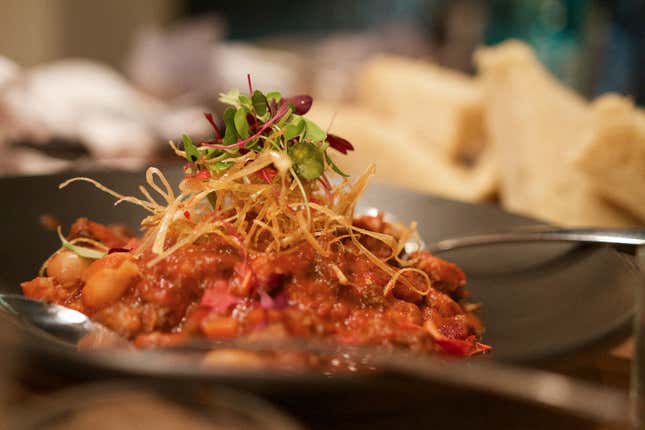
“We bring township food into accessible areas,” says Williams. He explains that cheap cuts of meat such as tripe, gizzards and sheep’s head were considered “poor black food” and formed a barrier of cultural separation. The Artivist brings authentic township food to modern dining with a menu influenced by international flavors.
The mogodu, jokingly referred to as ‘private school mogodu’, was inspired by Brazilian feijoada. The tripe is cooked with black beans, butter beans, chorizo and tomato to intensify the inherent umami flavour of mogodu.
At an event hosted by iconic fashion brand Loxion Kulca, The Artivist served house mogodu on steamed bread in bite-sized tapas portions. Williams explains how the traditionally solo food is “remixed” to create canapés for a social occasion.
When applying modern cooking techniques to traditional ingredients, chefs are cautious to preserve the integrity of the ingredient. Innovative chefs like Siyabulela Kobo manage to enhance ingredients without stripping their fundamental flavors.
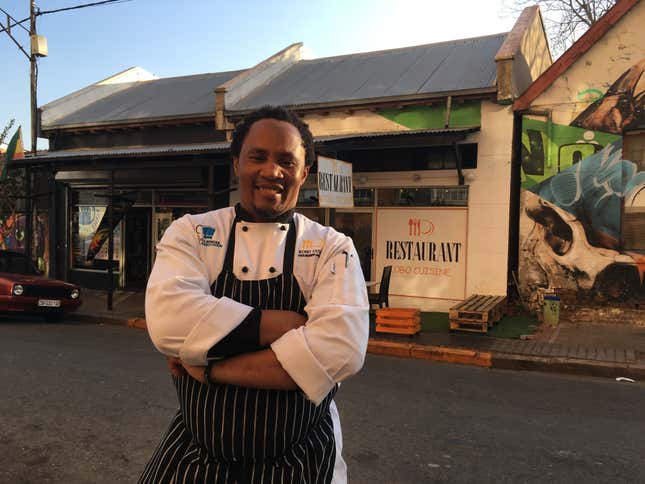
Kobo grew up in the Eastern Cape and affirms that “our food is not about spices, it’s about purity of the ingredients.”
He describes his cuisine as ‘progressive African-style food’: a balance of heritage flavors and modern techniques, embracing local, seasonal ingredients in their entirety. A signature dish, umvubo, reimagines amasi in sophisticated jellies and honey-amasi spheres. The spheres retain the tangy flavor and smooth texture of the traditional fermented drink.
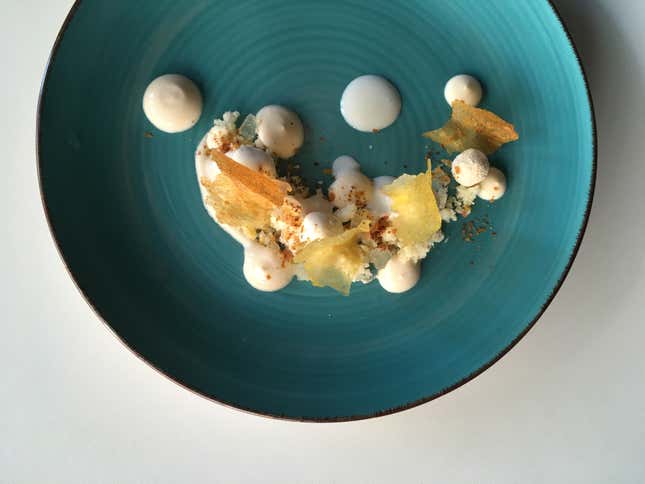
The dish is finished with a few delicate pap tuiles (wafers). Burnt phutu pap left at the bottom of the pot is salvaged, reboiled, blitzed in a food processor, and strained. The mixture is spread thin and baked in the oven to create crisp, arced wafers.
So, what is South African food? According to these groundbreaking chefs and restaurateurs, its South African ingredients or experiences refined through complex cooking techniques while preserving their essence. It’s comfort food or township foods interpreted to suit modern restaurant dining. “I don’t think the country is ready for it yet,” says Chef Mabaso, “but this is how I want to end my career, to reinvent and refine South African cuisine.”
